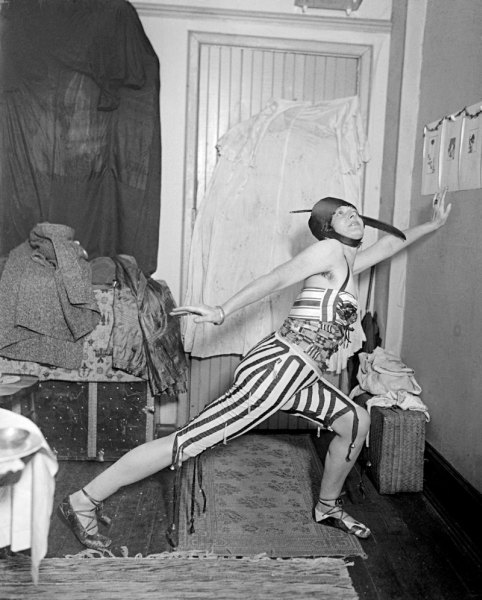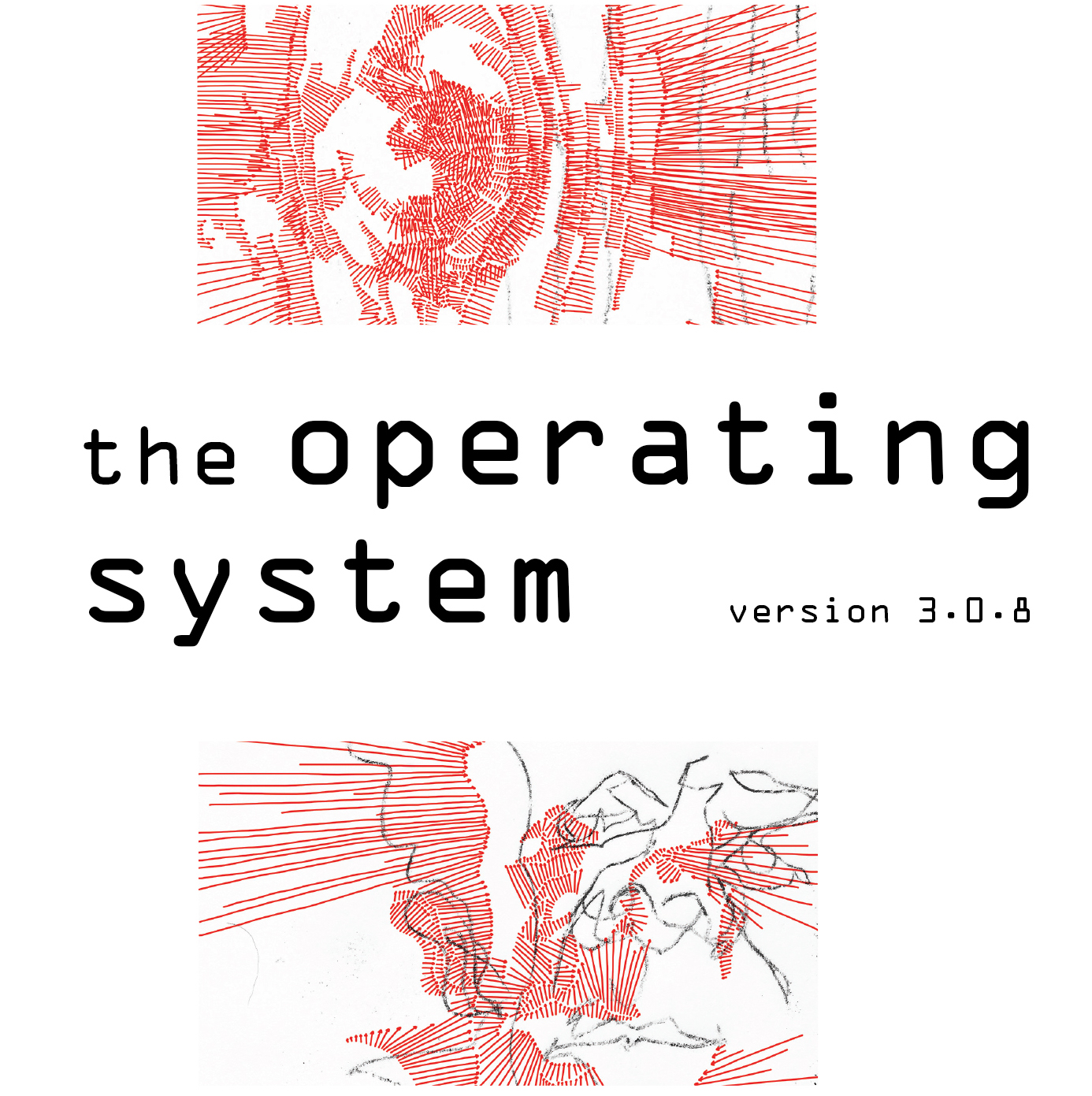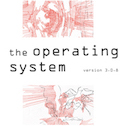5th ANNUAL NAPOMO 30/30/30 :: Day 20 :: JOHN J. TRAUSE on BARONESS ELSA von FREYTAG-LORINGHOVEN
[box]It’s hard to believe that this is our FIFTH annual 30/30/30 series, and that when this month is over we will have seeded and scattered ONE HUNDRED and FIFTY of these love-letters, these stories of gratitude and memory, into the world. Nearly 30 books, 3 magazines, countless events and online entries later, and this annual celebration shines like a beacon at the top of the heap of my very favorite things to have brought into being. [If you’re interested in going back through the earlier 120 entries, you can find them (in reverse chronological order) here.]
When I began this exercise on my own blog, in 2011, I began by speaking to National Poetry Month’s beginnings, in 1966, and wrote that my intentions “for my part, as a humble servant and practitioner of this lovely, loving art,” were to post a poem and/or brief history of a different poet…. as well as write and post a new poem a day. I do function well under stricture, but I soon realized this was an overwhelming errand.
Nonetheless the idea stuck — to have this month serve not only as one in which we flex our practical muscles but also one in which we reflect on inspiration, community, and tradition — and with The Operating System (then Exit Strata) available as a public platform to me, I invited others (and invited others to invite others) to join in the exercise. It is a series which perfectly models my intention to have the OS serve as an engine of open source education, of peer to peer value and knowledge circulation.
Sitting down at my computer so many years ago I would have never imagined that in the following five years I would be able to curate and gather 150 essays from so many gifted poets — ranging from students to award winning stars of the craft, from the US and abroad — to join in this effort. But I’m so so glad that this has come to be.
Enjoy! And share widely.
– Lynne DeSilva-Johnson, Managing Editor/Series Curator [/box]
[line][line]
JOHN J. TRAUSE on BARONESS ELSA von FREYTAG-LORINGHOVEN
(Hmm, it smells funky down here)

[line][script_teaser]How could I forget this creature, who had such an impact on Dr. Williams at the time, but who must have seemed to me so marginalized that she disappeared from my consciousness for about ten years? Yet, she was my type of woman (maybe), although kept at a distance by history. It seemed as if she disappeared in general for decades since her death in 1927, except as a footnote, until her “rediscovery” in the mid-1990s. This sadly seems the case with many female artists and writers, always the most radical of them, from the Modern period, and it took the scholarship and enthusiasm of later readers and art history students to resurrect this powerhouse from her early grave. [/script_teaser]
[line]
The radical avant-garde expression of Modernism would not exist if it were not for Baroness Elsa von Freytag-Loringhoven, who knew and so influenced the major players in the arts, culture, society, and literary circles on both sides of the Atlantic Ocean that it is hard to believe that one hundred years after her heyday, she is still relatively unknown in the world of poetry.
As I have written elsewhere, “Baroness Elsa was born Else Hildegard Plötz on July 12, 1874 in Swinemünde in the German Empire, now Świnoujście, Poland. On marrying the German architect August Endell in 1901 she became Else Endell. In 1913, after leaving Endell, she married the German Baron Leopold von Freytag-Loringhoven in New York City and became the Baroness Elsa von Freytag-Loringhoven. She died in Paris on December 15, 1927 of gas asphyxiation in what may have been an accident, a suicide, or a negligent homicide [Dada to the end]. This is merely the short hyphen of her terminal dates [and a reference to only two of her three husbands].” [1]
My first encounter with Baroness Elsa was in an eponymous chapter of The Autobiography of William Carlos Williams, called “The Baroness”, which I had read for the first time in the mid-1980s. [2] Dr. Williams mentions the Baroness’s outlandish costumes and behavior as well as her lack of inhibition, but not her strong body odor that appears in other descriptions.
How could I forget this creature, who had such an impact on Dr. Williams at the time, but who must have seemed to me so marginalized that she disappeared from my consciousness for about ten years? Yet, she was my type of woman (maybe), although kept at a distance by history. It seemed as if she disappeared in general for decades since her death in 1927, except as a footnote, until her “rediscovery” in the mid-1990s. This sadly seems the case with many female artists and writers, always the most radical of them, from the Modern period, and it took the scholarship and enthusiasm of later readers and art history students to resurrect this powerhouse from her early grave.
I felt as if I had found a friend and became devoted to Baroness Elsa once I noted her inclusion and strong presence in the exhibition Making Mischief: Dada Invades New York at the Whitney Museum of American Art in New York City in 1996. After learning more about her bizarre antics in New York City in the 1910s and 1920s, my poetry started to take a turn toward the Dadaist vein in content, if not in form, especially in my poetic narrative from 1997 of a true incident in 1993 involving Courtney Love, also set in Greenwich Village, Manhattan, the Baroness’s old stomping ground.
[line][box]
My contribution was the fresh retelling
of Courtney’s fall
just days before
outside the Strand Bookstore,
her hour-long occupation of its phone,
the anxieties of its manager,
her pushing him against the wall,
another fall, the police, the crowds, the sirens,
the screaming cadaver of Courtney carried away,
Lady Hole agape. [3]
[/box][line]
Only a few of the Baroness’s artworks remain, the most famous being God (1917), the plumbing trap of a sink mounted on a carpenter’s miter box, now in the collection of the Philadelphia Museum of Art. Originally attributed solely to Morton Livingston Schamberg, this Dada icon is now known to be the Baroness’s idea and execution in collaboration with the Modernist painter and photographer, whose only contribution may have been to photograph it. God stands out as an answer to her friend Marcel Duchamp’s Fountain (1917), the scandalously famous urinal treated as a readymade artwork, as well as her commentary on the American obsession with and exaltation of plumbing.
I also create artworks of collage, found-object sculptures, and readymades, and the simplicity of the Baroness Elsa’s powerfully playful constructions is an inspiration.
Most of her poetry, much of which had been published in magazines in her lifetime, remained in recent years unknown and unavailable until the Library of America included three pieces in the first volume of American Poetry: the Twentieth Century (2000). [4] Later, her first full-scale biography was published by MIT Press in 2002. [5] In 2011, her entire literary oeuvre was published as Body Sweats by MIT Press, and it included color reproductions of her art work and that of the original manuscripts of her poems with hand-drawn ornaments, typographical novelties, and text in black, red, and green ink. [6]
Early on, I was drawn also to her obsession and literary (and physical!) sparring with William Carlos Williams, whom she pursued even as far as surprising him several times in his hometown of Rutherford, New Jersey. She even claimed she wanted him to contract syphilis from her. This hit close to home for me as I grew up and still live in another suburban town within walking distance of Rutherford, and William Eric Williams, the poet’s older son, was my family pediatrician. Baroness Elsa pointed out how William Carlos Williams’s vaunted avant-garde stance was at odds with his safe, domestic life in Rutherford. She makes sly reference to what she sees as his sexual cowardice in “A Dozen Cocktails — Please” from ca. 1927:
[line][box]
No spinsterlollypop for me— yes— we have
No bananas—I got lusting palate— I
Always eat them— — — — — — —
They have dandy celluloid tubes— all sizes—
Tinted diabolically as a baboon’s hind-complexion.
A man’s a—
Piffle!
Will-o’-th’-wisp! What’s the dread
Matter with the up-to-date-American-
Home-comforts?
…
An apple a day— — —
…
Psh! Any sissy poet has sufficient freezing
Chemicals in his Freudian icechest to snuff all
Cockiness.
…
I feel whoozy!
I like that. I don’t hanker after Billyboys— but I am entitled
To be deeply shocked. [7]
[/box][line]
Will-o’-th’-wisp indeed.
The Baroness’s courage to use crude language, novel words, current jargon, and to coin new terms using the agglutination of her native German, “spinsterlollypop” being just one example, continues to excite me.
Like other Modernists who observed the urban world around them and incorporated the language of advertising and popular culture in their work, such as the poets T. S. Eliot and Kenneth Fearing and the artists Charles Demuth and Stuart Davis, the Baroness Elsa also loads some of her poems with the concern for the modern technological products becoming available to the middle classes and the trend toward mass communication and commercialism, all with a seemingly combative, but exuberant, dismissal. In “Subjoyride” from ca. 1920-1922 we see within the narrow column of her text references to Maillard’s, Yuban, Pep-O-Mint, Tootsie kisses, Marshalls’s, Chiclets, Royal Lux Camel, Wrigley’s, Philadelphia Cream, and more. [8]
It is in her “Sense into Nonesense: 2. Subjoyride,” also from ca. 1920-1922, that I find the Baroness’s crossing of the Hudson into New Jersey, in spirit, most arresting. After making reference to more commercial products and services, celebrities, and localities (Pompeian Night Cream, Vick’s, Melachrino, Dyckman Oval, Hydrox, Lorna Doone, Liquid Arvon), she ends the virtual subway ride with the real estate slogan: “The guard will tell you / Live happier in Leonia”. [9]
I finished reading Body Sweats cover-to-cover during the ravages of Hurricane Sandy in autumn 2012, when a number of towns in New Jersey were devastated, including nearby Moonachie and Little Ferry in southern Bergen County near Rutherford. Seeing this reference at the time to another town in southern Bergen County from a poem written in the 1920s, with its arch take on real estate advertising, I included pictographic elements in a poem of mine about Hurricane Sandy, “Santa is Coming,” such as Baroness Elsa included in her poems, and echoed her final imperative:
[line][box]
Santa is Coming
.
I
Sandy is sandy
and watery, wet
Sandy surges and causes surges
at the causeway, the berm
is bro-
ken
water wets
whitecaps wave at you
sand sits in your living room
six feet high
surrounded
towns surrounded water
under water wet
why?
II
Santa = Sandy
/ / / /
/ / / /
/ / / /
/ /
/
/
III
Sandy blows
and she has an app to fuck you up the ass
Sandy blasts sandy blasts
pines pitch bend
winds wail
oaks, maples all
fall
fill flood
power pulses
taps out
t t ts
psss…
live longer in ______. [10]
[/box][line]
Smell the funk and fill in the blank.
[line][line][box]
NOTES
[1] John J. Trause. “William Carlos Williams and the Baroness” in The Rutherford Red Wheelbarrow no. 4 (2011), pp. 171-177.
[2] Williams, William Carlos. The Autobiography of William Carlos Williams. New York : New Directions, 1967, c1951, Chapter 28, pp. 163-169.
[3] From “How Courtney Love Fell, Used the Telephone, Pushed a Manager, Got Carried Away, and Jilly Learned a New Word” in Inside Out, Upside Down, and Round and Round: Poems Selected and New. New Delhi : Nirala Publications, Nirala Series , 2012, pp. 58-59.
[4] American Poetry: The Twentieth Century. Vol. 1 (Henry Adams to Dorothy Parker). New York : Library of America. 2000, pp. 99-100.
[5] Gammel, Irene. Baroness Elsa: Gender, Dada, and Everyday Modernity: A Cultural Biography. Cambridge, Mass. : MIT Press, 2002.
[6] Body Sweats The Uncensored Writings of Elsa von Freytag-Loringhoven. Edited by Irene Gammel and Suzanne Zelazo. Cambridge, Mass. : MIT Press, 2011.
[7] Body Sweats, pp. 48-50.
[8] Body Sweats, pp. 99-102.
[9] Body Sweats, pp. 102-103.
[10] The Rutherford Red Wheelbarrow no. 6 (2013), pp. 18-19 and Eccolinguistics 2.4 [2014], p. [8].[/box]
[line][line]
[textwrap_image align=”left”]http://www.theoperatingsystem.org/wp-content/uploads/2016/04/My-Official-Portrait-in-Color-Blue-e1461017869970.jpg[/textwrap_image] JOHN J. TRAUSE, the Director of Oradell Public Library, is the author of Eye Candy for Andy (13 Most Beautiful… Poems for Andy Warhol’s Screen Tests, Finishing Line Press, 2013); Inside Out, Upside Down, and Round and Round (Nirala Publications, 2012); Seriously Serial (Poets Wear Prada, 2007; rev. ed. 2014); and Latter-Day Litany (Éditions élastiques, 1996), the latter staged Off-Off Broadway. His book of fictive translations, found poems, and manipulated texts, Exercises in High Treason (2016), is available from Great Weather for Media. His translations, poetry, and visual work appear internationally in many journals and anthologies, including the artists’ periodical Crossings and Rabbit Ears (NYQ Books, 2015), the anthology of television poems. Marymark Press has published his visual poetry and art as broadsides and sheets. He has shared the stage with Steven Van Zandt, Anne Waldman, Karen Finley, and Jerome Rothenberg; the page with Lita Hornick, William Carlos Williams, Woody Allen, Ted Kooser, Victor Buono, and Pope John Paul II; and the cage with the Cumaean Sibyl, Ezra Pound, Hannibal Lector, Andrei Chikatilo, and George “The Animal” Steele. He is a founder of the William Carlos Williams Poetry Cooperative in Rutherford, N. J., and the former host and curator of its monthly reading series. For the sake of art Mr. Trause hung naked for one whole month in the summer of 2007 on the Art Wall of the Bowery Poetry Club. As chance would have it, entirely by coincidence Don Zirilli wrote a 30/30/30 piece ON John J. Trause for this year’s series! Check it out, here.
[line]
[h5]Like what you see? Enter your email below to get updates on events, publications, and original content like this from The Operating System community in the field below.[/h5]
[mailchimp_subscribe list=”list-id-here”]
[line]
[recent_post_thumbs border=”yes”]


